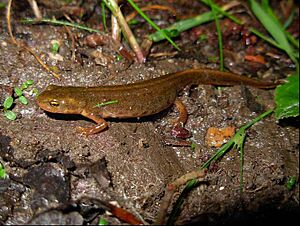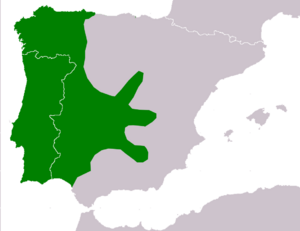Bosca's newt facts for kids
Quick facts for kids Boscá's newt |
|
|---|---|
 |
|
| Ventral surface | |
| Conservation status | |
| Scientific classification | |
| Genus: |
Lissotriton
|
| Species: |
boscai
|
 |
|
| Synonyms | |
|
|
The Boscá's newt (Lissotriton boscai), also called the Iberian newt, is a small amphibian. It belongs to the newt and salamander family, called Salamandridae. You can find this special newt living in Portugal and the western parts of Spain.
Contents
Why is it called Boscá's Newt?
The name boscai was given to this newt to honor a Spanish scientist. His name was Eduardo Boscá. He was a herpetologist, which means he studied amphibians and reptiles.
What Does Boscá's Newt Look Like?
Boscá's newts are small creatures. Female newts can grow up to about 94 millimeters long. Male newts are a bit smaller, reaching about 75 millimeters.
Skin and Color
When these newts are out of the water, their skin feels bumpy. It has a granular texture. They also have small ridges along their backs. Their bodies can be brownish, yellowish, or a dull green color. You might also see dark spots on them. A cool fact is that their bellies are bright orange!
Special Features
During the time when newts breed, male Boscá's newts develop a special feature. A brightly colored bump grows at the tip of their tail. This helps them attract a mate.
Where Do Boscá's Newts Live?
Boscá's newts mostly live in water. They prefer shallow ponds and streams. These water bodies usually have lots of plants growing in them.
Favorite Places to Live
You can also find these newts in places changed by humans. This includes ditches and other artificial water areas. They like to live in oak woodlands and scrubland. Sometimes, they are found in sandy areas near the coast. They can even live on farms and in plant nurseries.
Protecting Boscá's Newt
Right now, the number of Boscá's newts is stable. This means they are not considered to be in danger of disappearing. However, in some places, their homes are being destroyed. This happens when their water habitats are damaged or removed. It's important to protect these areas.


